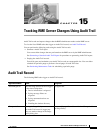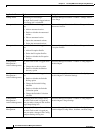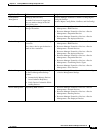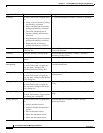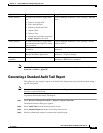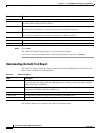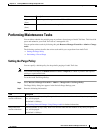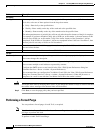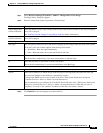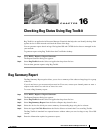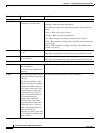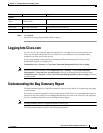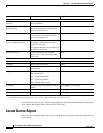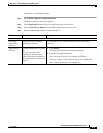
15-8
User Guide for Resource Manager Essentials 4.1
OL-11714-01
Chapter 15 Tracking RME Server Changes Using Audit Trail
Performing Maintenance Tasks
Caution You might delete data by changing these values. If you change the number of days to values lower than
the current values, messages over the new limits will be deleted.
Step 3 Click Save, to save the purge policy that you have specified.
Performing a Forced Purge
You can perform a forced purge of Audit Trail, as required.
Note View Permission Report (Common Services > Server > Reports) to check if you have the required
privileges to perform this task.
To perform a Audit Trail Forced Purge:
Scheduling
Run Type You can specify when you want to run the purge job for Change Audit and Audit Trail records.
To do this, select one of these options from the drop down menu:
• Daily—Runs daily at the specified time.
• Weekly—Runs weekly on the day of the week and at the specified time.
• Monthly—Runs monthly on the day of the month and at the specified time.
The subsequent instances of periodic jobs will run only after the earlier instance of the job is complete.
For example: If you have scheduled a daily job at 10:00 a.m. on November 1, the next instance of this
job will run at 10:00 a.m. on November 2 only if the earlier instance of the November 1 job has
completed. If the 10.00 a.m. November 1 job has not completed before 10:00 a.m. November 2, then
the next job will start only at 10:00 a.m. on November 3.
Date Enter the start date in the dd Mmm yyyy format, for example, 02 Jun 2004, or click on the calendar
icon and select the date.
at Enter the start time, in the hh:mm:ss format (23:00:00).
Job Info
Job Description The system default job description, ChangeAudit Records - default purge job is displayed.
You cannot change this description.
E-mail Enter e-mail addresses to which the job sends messages at the beginning and at the end of the job.
You can enter multiple e-mail addresses separated by commas.
Configure the SMTP server to send e-mails in the View / Edit System Preferences dialog box
(Common Services > Server > Admin > System Preferences).
We recommend that you configure the CiscoWorks E-mail ID in the View / Edit System Preferences
dialog box (Common Services > Server > Admin > System Preferences). When the job starts or
completes, an e-mail is sent with the CiscoWorks E-mail ID as the sender's address.
Field Description




